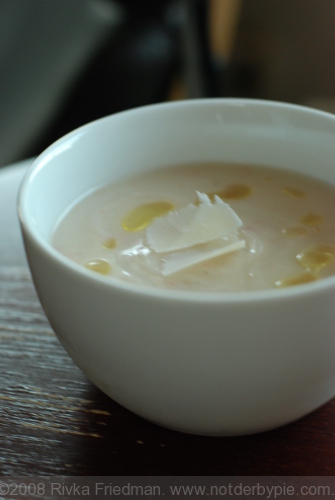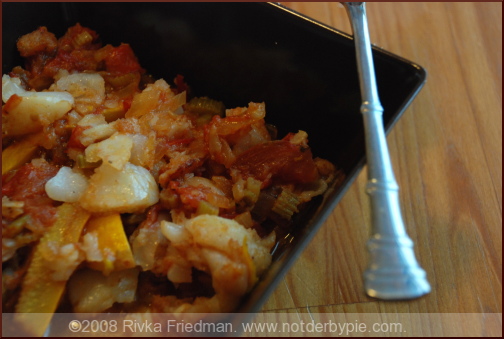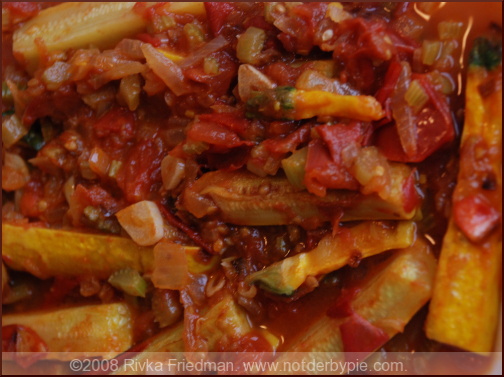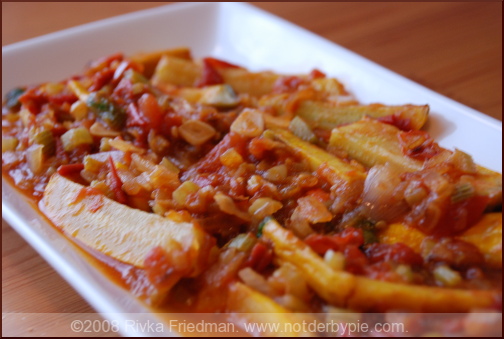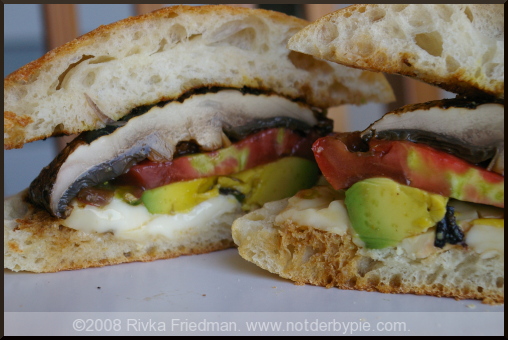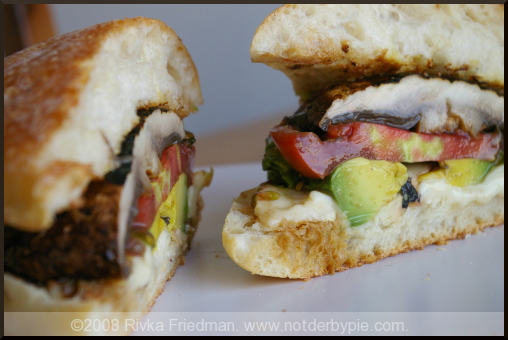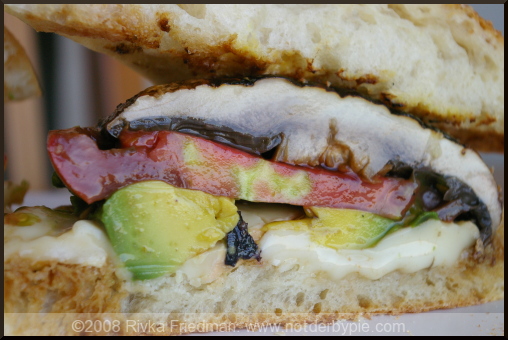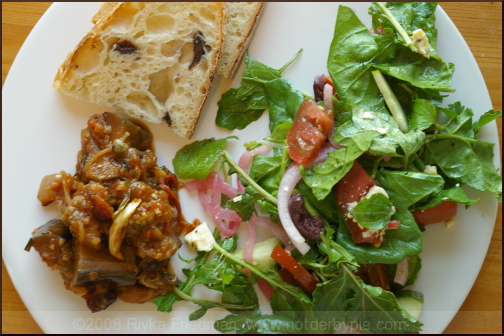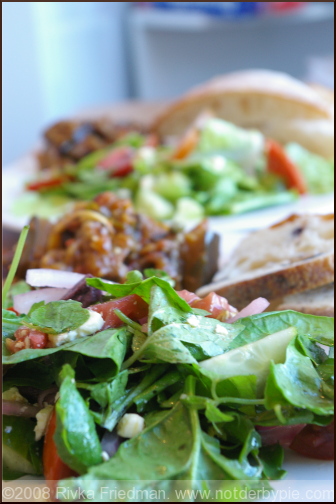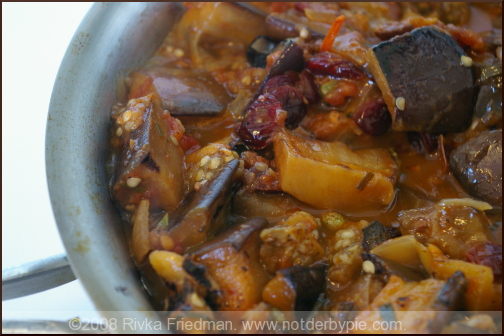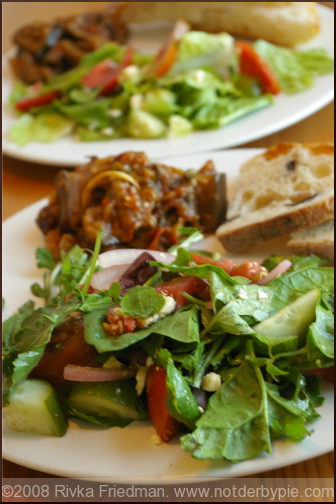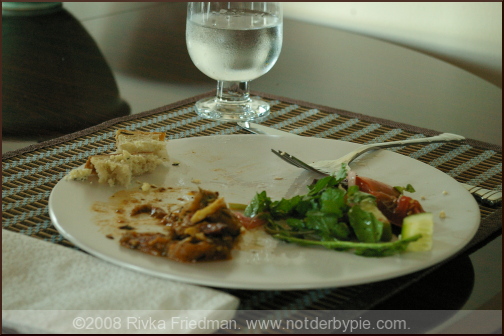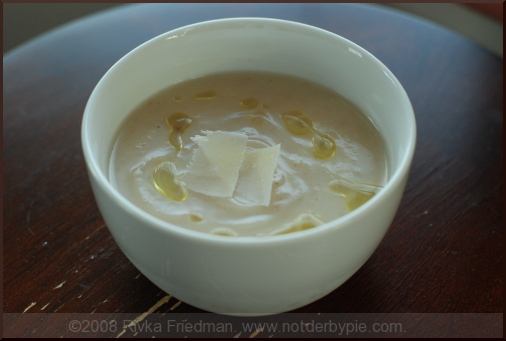 Keeping kosher has its fair share of... challenges. Never have I cooked a meat dish that has any sort of dairy product, be it cream or even butter. When I make meat for dinner, dessert can't have butter in it. I don't use shortening, which makes things rather difficult. Butter aside, one great sacrifice of kosher cooking is not being able to use pancetta. Now I can't say for sure that it's actually a sacrifice -- after all, I've never actually had pancetta -- but I think it's safe to say that it's one of the most oft-used flavorings for vegetables, soups, and stews of all kinds.
Keeping kosher has its fair share of... challenges. Never have I cooked a meat dish that has any sort of dairy product, be it cream or even butter. When I make meat for dinner, dessert can't have butter in it. I don't use shortening, which makes things rather difficult. Butter aside, one great sacrifice of kosher cooking is not being able to use pancetta. Now I can't say for sure that it's actually a sacrifice -- after all, I've never actually had pancetta -- but I think it's safe to say that it's one of the most oft-used flavorings for vegetables, soups, and stews of all kinds.
When I came across a beautiful cauliflower at the farmers market a couple weeks ago, I knew I'd be experimenting with cauliflower soup recipes. I came home and began poking around my cookbooks and recipe sites in search of promising combinations, but almost every recipe I found called for some form of pig. And I can understand why: pancetta, bacon and the like provide the perfect smoky, meaty background flavor against which the mild, creamy, fresh-tasting cauliflower really shines. I started to feel a bit handicapped -- as though no amount of searching would product an all-vegetarian recipe that would have real flavor.
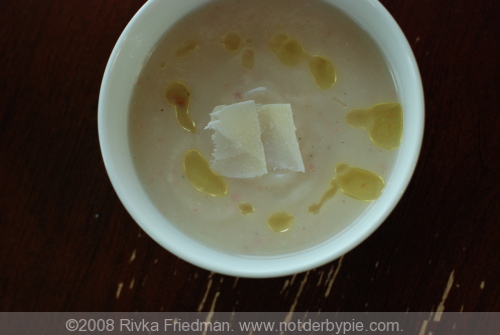
Fortunately, I didn't dispair. I just decided to conduct an innocent little test, using none other than Morningstar Farms Bacon Strips. For those of us who've never tried bacon, Morningstar makes a pretty tasty imitation. Their strips are smoky and salty, and if you fry them over super-low heat for a while, they even get nice and crispy. I eat them all the time for breakfast, but I'd never thought to use them in place of bacon in recipes -- until now.
I chopped two strips into bits, and fried them in olive oil with a bit of garlic and onion. Once the onion was somewhat browned, I added two cups of water to stop the cooking. I then added three more cups of water, and 1 whole cauliflower, chopped into florets. I sprinkled salt and pepper, grated a bit of nutmeg, and dropped a parmiggiano rind in before popping the cover on and letting it simmer away. Once the cauliflower was cooked through and soft, I ggggg-ed away with my immersion blender until the soup was completely smooth. Taking inspiration from an epicurious recipe, I topped each bowl with a shaving of parmiggiano and a drizzle of white truffle oil. Totally vegetarian, totally delicious
Cauliflower Soup adapted from Bon Appetit
2 ounces applewood-smoked bacon (about 2 1/2 slices), chopped (I used Morningstar farms) 1 cup chopped onion 3/4 cup chopped celery 2 garlic cloves, chopped 6 cups 1-inch pieces cauliflower (cut from 1 large head) 3-6 cups liquid: low-salt chicken broth and water are both fine 1 3/4-inch cube Pecorino Romano or Parmiggiano Reggiano cheese plus additional cheese shavings for serving
1/2 cup heavy whipping cream, optional (I didn't use it) White or black truffle oil (for drizzling) preparation
Sauté bacon in heavy large saucepan over medium heat until golden brown and some fat renders. Add onion, celery, and garlic. Cover and cook until vegetables are soft, stirring occasionally, about 7 minutes. Add about 5 cups water (less for thicker soup), cauliflower, and cheese cube. Bring to boil. Reduce heat to medium-low, cover, and simmer until cauliflower is tender, about 20 minutes.
Puree soup in batches in processor. Return to same pan. Add cream if desired, and bring soup to simmer. Thin with more broth by 1/4 cupfuls if desired. Season with salt and pepper. Cool slightly; cover and chill. Can be made 1 day ahead.
To serve: reheat soup. Ladle into bowls. Sprinkle with cheese shavings; drizzle with truffle oil.
